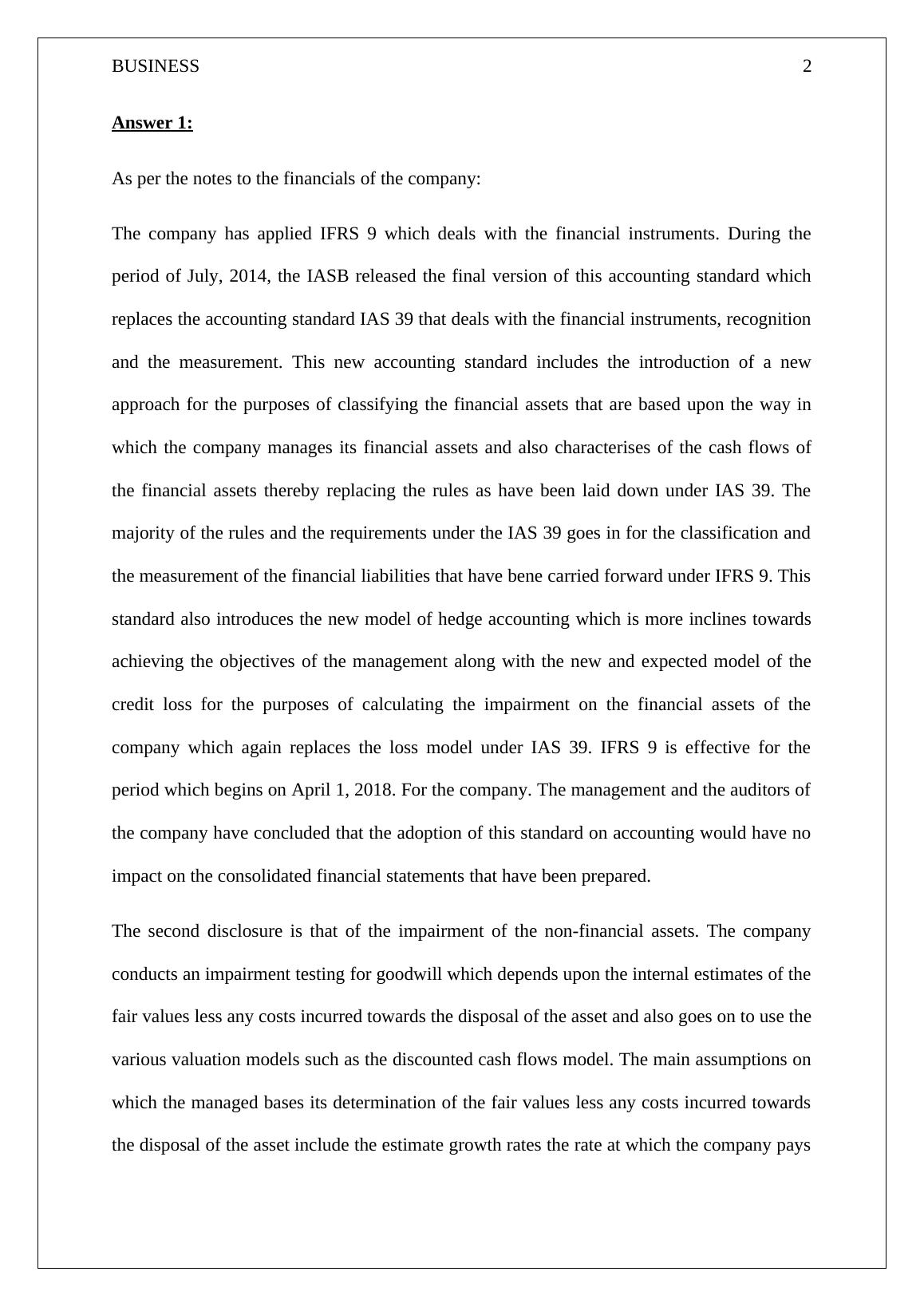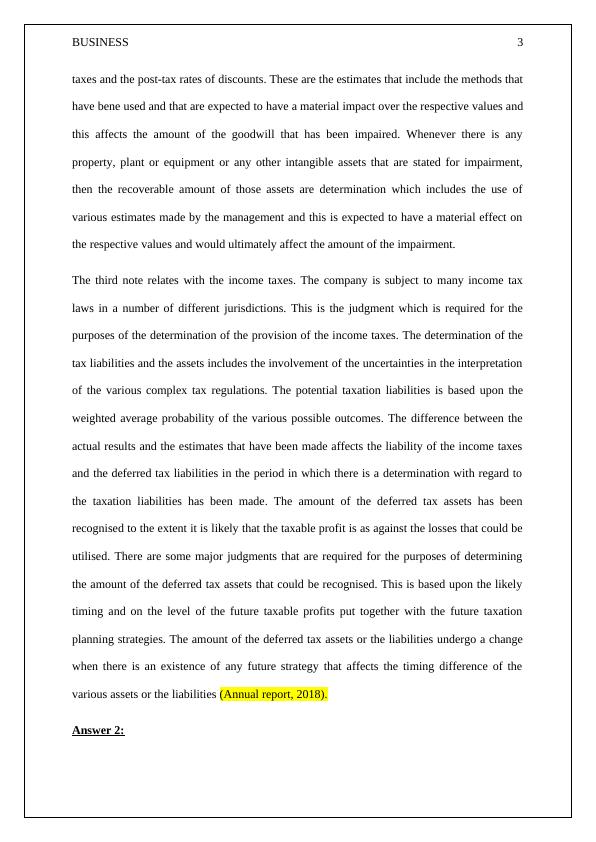IFRS 9, Impairment of Non-Financial Assets, Income Taxes - Notes to Financials
The assignment involves analyzing financial statements, commenting on note disclosures, identifying a Canadian company with specific financial ratios, addressing ethical issues in the workplace, and applying revenue recognition concepts to a chosen company.
9 Pages1768 Words66 Views
Added on 2023-01-17
About This Document
This document provides information about IFRS 9, impairment of non-financial assets, and income taxes through the notes to financials of a company. It explains the impact of these accounting standards on the company's financial statements.
IFRS 9, Impairment of Non-Financial Assets, Income Taxes - Notes to Financials
The assignment involves analyzing financial statements, commenting on note disclosures, identifying a Canadian company with specific financial ratios, addressing ethical issues in the workplace, and applying revenue recognition concepts to a chosen company.
Added on 2023-01-17
ShareRelated Documents
End of preview
Want to access all the pages? Upload your documents or become a member.
Financial reporting definition - AccountingTools
|9
|2695
|15
Assignment on Financial Accounting | 1
|5
|805
|54
International Financial Reporting Standard: Recent Developments and Impact
|4
|699
|60
Corporate Accounting Assignment | Reporting Assignment
|9
|2003
|36
Advanced Financial Accounting
|8
|1559
|27
Advanced Financial Accounting Content 2022
|10
|3038
|17



